Dog Grooming
10 Lifesaver Dog Grooming Essentials Your Pet Will Thank You For
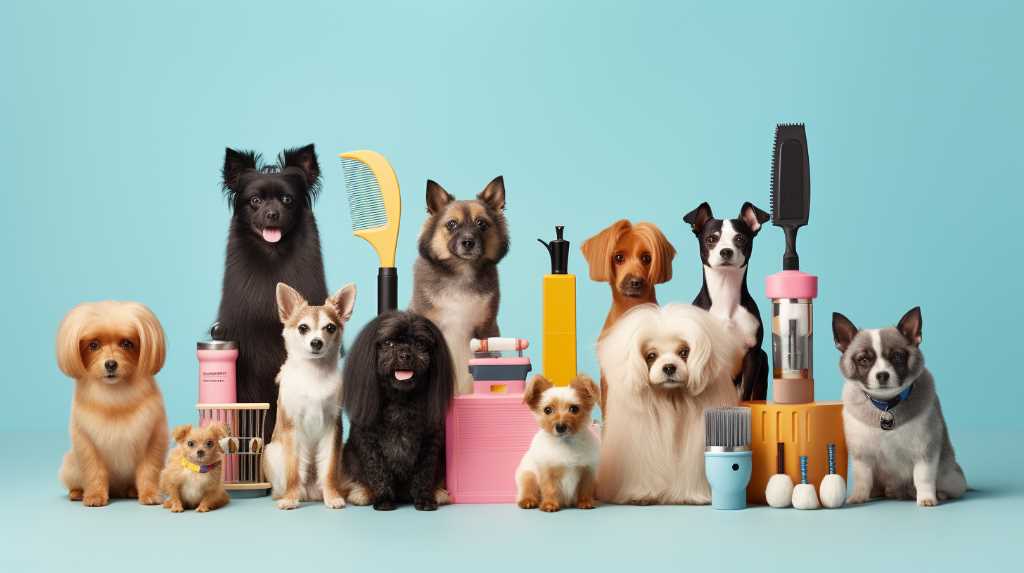

You’re not just a pet owner, you’re your dog’s personal superhero. Armed with the right tools, you’re ready to tackle any grooming challenge that comes your way.
But even superheroes need the right equipment. From brushes to toothpaste, we’ve compiled a list of 10 dog grooming essentials that’ll transform your canine’s care routine.
Dive in, discover these lifesavers, and watch your dog’s gratitude unfold.
It’s time to take your pet grooming to the next level.
The Importance of Regular Dog Grooming
You’re doing your furry friend a huge favor by maintaining a regular grooming schedule. The grooming frequency fundamentally affects your pet’s health and happiness.
It’s not just about appearances; it’s about promoting a healthy lifestyle. Regular grooming guarantees your pet is free of parasites, mat-free, and comfortable.
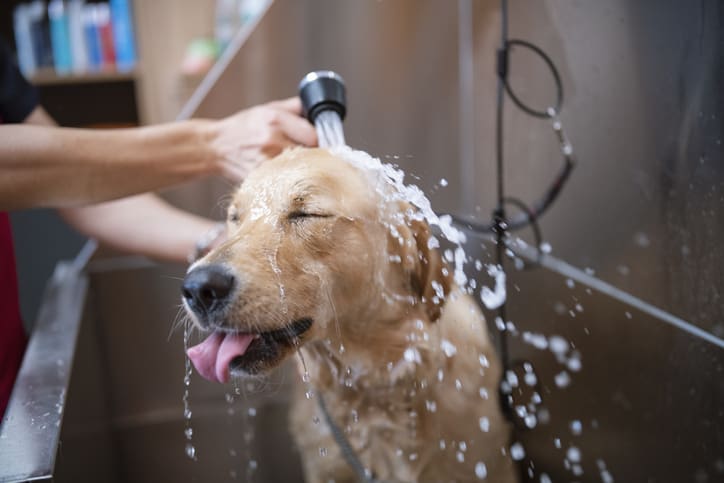

Grooming benefits also extend beyond health. It’s a bonding time, enabling you to spot any unusual signs like lumps or skin issues early. Plus, it keeps your home cleaner, reducing unwanted pet hair and dander.
Remember, every dog is unique, and so are their grooming needs. It’s crucial to figure out the best schedule for your pet’s breed and lifestyle.
Ensuring a regular grooming routine means you’re serving your pet’s best interests, contributing to their overall well-being.
Essential Grooming Tools: Brushes and Combs
When it comes to keeping your furry friend’s coat in top condition, nothing beats a good brush or comb. They’re essential in your pet grooming toolkit. Understanding brush types and comb varieties can make a significant difference in the health and appearance of your dog’s coat.
Here are some brush types and comb varieties to consider:
- Slicker Brushes: Great for removing mats and tangles.
- Rake Brushes: Ideal for dogs with thick fur.
- Bristle Brushes: Perfect for short-haired, smooth-coated dogs.
- Pin Brushes: Best for long-haired dogs.
- Flea Combs: Essential for detecting and removing fleas.
Choose the right brush or comb based on your dog’s breed, coat type, and specific needs. Your dog’s comfort and health are worth that extra effort.
The Right Way to Bathe Your Dog
After you’ve properly brushed and combed your dog, it’s time to move onto the next crucial step – bathing.
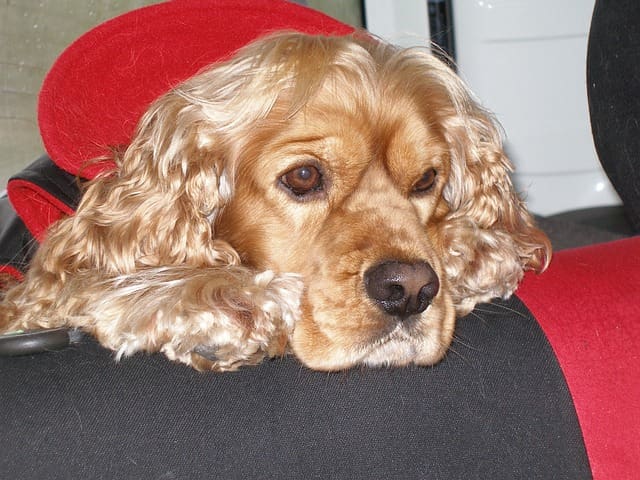

Bathing your furry friend isn’t simply about getting them wet and soapy; it involves careful technique and the right products.
You’ll need to know the correct way to carry out the bathing process and how to choose the most suitable dog shampoo.
Appropriate Bathing Techniques
Proper bathing techniques can make a world of difference in keeping your dog’s coat shiny and healthy. One factor to consider is bathing frequency. Over-bathing can strip the coat of natural oils, causing a dull and dry appearance. On the flip side, not bathing your dog often enough can lead to a buildup of dirt and oils, resulting in a matted, unkempt look.
Here are some tips to remember:
- Find the right bathing frequency for your dog’s breed and lifestyle.
- Use lukewarm water to avoid scalding or chilling your pet.
- Always wet the coat thoroughly before applying shampoo.
- Rinse well to avoid soap residue, which can cause skin irritation.
- Dry your dog promptly to prevent chilling.
Now that you’re familiar with these techniques, let’s move on to selecting dog shampoos.
Selecting Dog Shampoos
Choosing the right shampoo for your canine friend isn’t just about the scent; it’s also about the ingredients and how they’ll affect your pup’s skin and coat.
Be aware of shampoo allergies, as some dogs can be sensitive to certain ingredients. If your dog is prone to allergies, choosing a hypoallergenic shampoo is a wise move.
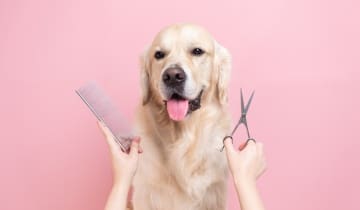

You should also consider organic options. They’re free from harsh chemicals and synthetic fragrances that can cause dryness and irritation. Look for shampoos with natural ingredients like aloe vera, oatmeal, or chamomile, which soothe and nourish the skin.
Nail Care: Trimming and Filing
Now that your furry friend is squeaky clean, let’s move on to another key aspect of dog grooming – nail care.
It’s not just about trimming; filing is equally important for smooth and healthy nails.
Getting the right clippers and mastering effective filing techniques can really make the difference.
Choosing Right Nail Clippers
You’ll find a variety of nail clippers on the market, but it’s essential to pick the right one for your dog’s size and nail thickness. When considering nail clipper types, take note of the following:
- Guillotine Clippers: Best for small to medium dogs with thin nails.
- Scissor Clippers: Ideal for large dogs with thick nails.
- Grinder Tools: Suitable for dogs that are afraid of clippers.
- Clippers with Sensor: Designed to prevent over-trimming and injuring your dog.
- Clippers with Safety Stop: Clippers’ safety features include a stop to prevent you from cutting too far.
Choosing the right tool not only ensures your dog’s comfort but also your peace of mind.
Now, let’s move to effective filing techniques to give your dog’s nails a smooth finish.
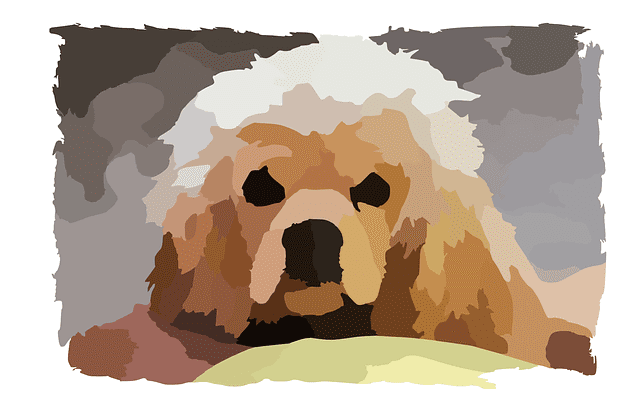

Effective Filing Techniques
After trimming, it’s time to focus on filing techniques to ensure a smooth finish for those nails. Filing frequency depends on your pet’s activity level and nail growth rate. Typically, once a week is a good rule of thumb.
Start by selecting the right file type. Metal files are durable and effective, while emery boards are softer and may be more comfortable for your pet.
Always file in one direction to avoid splitting the nail and causing discomfort. Hold the paw firmly but gently, and file from the base of the nail towards the tip.
It’s important to be patient and calm during this process. Proper filing is a crucial part of pet grooming that ensures your pet’s comfort and health.
Your furry friend will thank you for it!
Dental Hygiene: Brushes and Toothpaste for Dogs
Investing in a good dog toothbrush and toothpaste is crucial for maintaining your pet’s dental hygiene. Just like in humans, oral health has a significant impact on overall well-being in dogs. By choosing suitable products and dog-friendly diets, you’re not only keeping their teeth clean but also reducing the risk of dental diseases.
Consider the following when providing oral care to your pet:
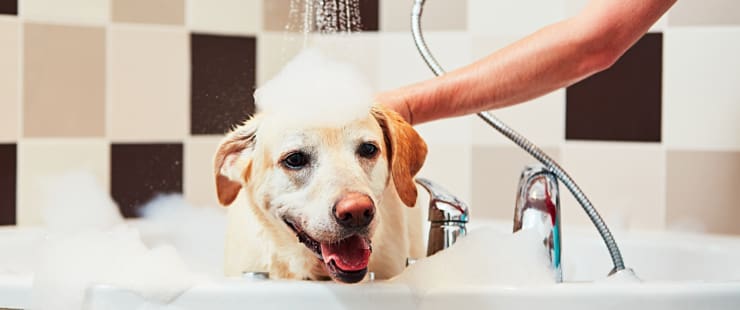

- Select a toothbrush designed for dogs, it’ll make the process easier.
- Use toothpaste made for dogs. Human toothpaste can harm them.
- Consider dental treat options. They’re great for their teeth and they’ll love them.
- Regular brushing is essential. Aim for at least twice a week.
- Regular check-ups with a vet are also important.
Ears and Eyes: Keeping Them Clean and Healthy
Your dog’s eyes and ears are sensitive areas that require regular attention to stay clean and healthy. With the right products and techniques, you’ll keep them free of infections and discomfort.
Dive into our tips and tricks to effectively manage this essential part of your pet’s hygiene routine.
Essential Eye Care Products
When it comes to your pet’s eye care, essential products like tear stain removers and eye wash solutions can’t be overlooked. Tear Stain Remedies are specifically designed to treat the unsightly stains often seen around your pet’s eyes. On the other hand, Canine Eye Drops provide relief from irritation and help maintain eye health.
Here are some products to consider:
- Tear stain removers: These are designed to gently and safely remove stains around your pet’s eyes.
- Eye drops: They alleviate irritation and prevent potential eye problems.
- Eye wipes: They’re perfect for daily cleaning, keeping your pet’s eyes sparkling.
- Eye lubricants: These provide extra moisture, preventing dryness and irritation.
- Protective goggles: They shield your pet’s eyes from dust, UV light, or during travel.
Effective Ear Cleaning Methods
Just as you take care of your pet’s eyes, it’s also crucial to maintain their ear health with effective cleaning methods.
Regular ear cleaning can aid in ear infections prevention, reducing the risk of complications.
You can easily find a range of natural cleaning solutions that are gentle yet effective for your pet’s delicate ears. These typically contain ingredients like witch hazel, tea tree oil, or vinegar, which can break down ear wax and kill bacteria without causing irritation.
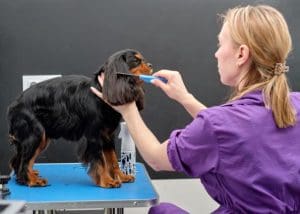

Don’t forget to dry your pet’s ears thoroughly after cleaning, as moisture can create a breeding ground for bacteria.
Additionally, proper grooming can prevent excess hair in the ears, another contributing factor to infections.
Your pet’s ear health is in your hands, so let’s ensure it’s taken care of properly.
Preventing Infections: Tips & Tricks
After mastering ear cleaning, let’s pivot to an equally important task: preventing infections. Infections can cause discomfort to your furry friend, and in severe cases, lead to serious health issues. Understanding infection indicators is key to preventing them. Antibacterial products also play a crucial role in this battle.
Here are some practical tips and tricks:
- Regularly check your pet for infection indicators such as redness, swelling, or unusual discharge.
- Use antibacterial products during grooming sessions.
- Maintain a clean living environment for your pet.
- Keep your pet’s vaccinations up to date.
- Regular vet check-ups are essential for early detection and prevention.
Fur Care: Shampoos and Conditioners
You’ll find that the right shampoos and conditioners can make a world of difference in your dog’s fur care routine. It’s not just about cleaning; it’s about coat nutrition and fur restoration. High-quality grooming products, rich in essential oils and vitamins, will nourish their skin, promoting a shiny, healthy coat. Always choose products suitable for your dog’s fur type, whether it’s dry, oily, or normal. Look for labels stating ‘moisturizing’, ‘smoothing’, or ‘repairing’ for fur restoration, and those highlighting ‘nourishing’ or ‘fortifying’ for coat nutrition.
Remember, each bath is an opportunity to improve your pet’s fur health. With the right products, you’re not just cleaning; you’re caring.
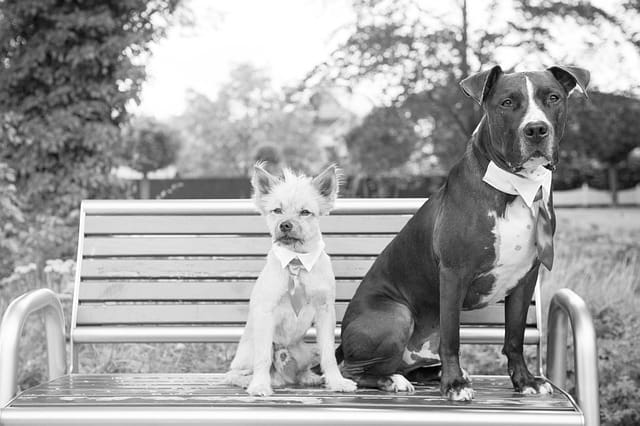

Now, let’s transition into the equally essential topic of tick and flea prevention.
Tick and Flea Prevention
In the realm of tick and flea prevention, it’s vital to stay proactive and use preventative measures to keep those pesky parasites at bay. Understanding the tick lifespan and the rapid reproduction of flea infestations will aid in your protective efforts.
Here are some essential steps to follow:
- Regularly check your pet’s fur for ticks or fleas.
- Maintain a clean environment, as fleas thrive in dirty surroundings.
- Use preventative treatments like sprays, powders or collars.
- Be aware of the tick lifespan; they can live a long time without feeding.
- Don’t underestimate the severity of flea infestations; act promptly.
Your efforts aren’t just about maintaining a clean pet; you’re safeguarding their health and happiness.
Professional Grooming Services Vs. Home Grooming
When it comes to keeping that furball clean and tidy, you’ve probably wondered about professional grooming services versus home grooming. Let’s break it down.
Professional grooming can be pricey, but it offers advantages like expert handling, comprehensive care, and time-saving convenience. Grooming costs comparison, however, reveals home grooming to be a more economical choice. But it’s not without its DIY grooming challenges. You’ll need to invest in tools, learn techniques, and handle your pet’s possible resistance. Yet, it can also be a bonding experience and allows for personalized care.
Remember, the choice isn’t absolute; you can mix professional services with home grooming.
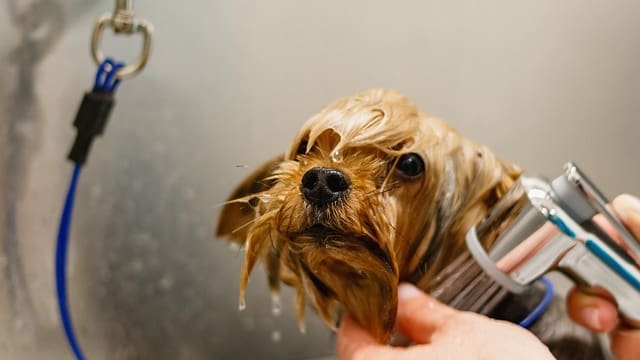

Next up, we’ll explore grooming tips for dogs with special needs, another important aspect to consider.
Grooming Tips for Dogs With Special Needs
Navigating the world of special needs canines, it’s crucial to understand the unique care they require, particularly when it comes to keeping them clean and comfortable. Special needs accommodations aren’t optional, they’re essential for their wellbeing. Adaptive grooming tools can be a lifesaver, making the grooming process less stressful for both you and your pet.
Here are a few practical tips:
- Always be gentle and patient, taking breaks as necessary.
- Use adaptive grooming tools designed for special needs dogs.
- Remember to reward your dog for their cooperation.
- Consult with a professional groomer experienced in special needs care.
- Regularly check and clean any mobility aids or prosthetics.
In doing so, you’re not just grooming your dog, but also creating a comfortable, stress-free environment for them.
Frequently Asked Questions
What Are Some Signs That My Dog Might Be Allergic to a Particular Grooming Product?
If your dog’s showing allergy symptoms like scratching, redness, or swelling after using a grooming product, they might be allergic. It’s important to identify this early and consider product alternatives to prevent discomfort.
How Can I Make Grooming a More Enjoyable Experience for My Anxious Dog?
You can turn grooming into a walk in the park for your anxious dog by incorporating calming techniques and anxiety toys. Patience, gentle touch, and rewarding good behavior can make a world of difference.
Are There Any Dog Breeds That Require Less Common Grooming Practices or Tools?
Absolutely, some breeds require specific tools or unusual grooming techniques. For instance, poodles need clippers for their unique hair, while bulldogs require special attention to their skin folds to prevent infections.
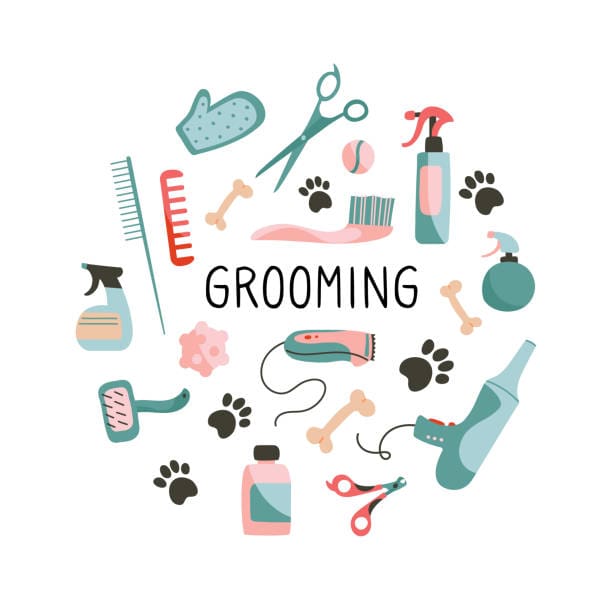

Can I Use Human Grooming Products on My Dog, Such as a Human Hairbrush or Toothpaste?
You shouldn’t use human grooming products on your dog. Just as you wouldn’t use a cactus for a pillow, dogs need their own brushes and toothpaste. Human products carry grooming risks for dogs. Look for product alternatives.
How Often Should I Take My Dog to a Professional Groomer if I Am Also Maintaining Their Grooming at Home?
You’re doing great with home grooming! However, it’s still important to take your dog to a professional groomer every 4-6 weeks. They’ll handle tasks you can’t, ensuring your pet’s optimal health and comfort.
Conclusion
Just as a ship needs maintenance to stay seaworthy, your dog’s grooming is crucial for their health and happiness.
A well-stocked grooming toolkit, smart bathing practices, nail, dental, and fur care, are lifebuoys for your furry friend.
Remember, the choice between professional or home grooming is yours, and even dogs with special needs can sail smoothly with the right grooming routine.
So, steer your ship wisely, your dog will thank you for a journey filled with cleanliness and care.


Hello, My Dog-Loving Friends! I’m Jason Brown, a social media marketer for Dog Training Schools and a writer at BestDogTraining.com. My world is all about the joy and wisdom our four-legged friends bring. I love the exchange of learning with dogs; it’s not just my job. It’s my way of life.
My journey began at Ohio State with a degree in journalism, fueling my passion for storytelling. This passion comes alive in every post and article I write, whether about the latest dog training techniques or heartwarming canine tales.
When I’m not immersed in the world of dogs, you can find me surfing. There’s a thrilling similarity between the unpredictability of the ocean and working with animals – both are endlessly fascinating. I’m also an aspiring poet, although I embrace the more humorous side of my attempts at verse.
Traveling is another passion of mine. My wife, kids, and I explore new places, always accompanied by our Basset Hound, Snoopy. He’s more than a pet; he’s integral to our family adventures.
Through my work, hobbies, and travels, I’ve discovered that life’s most fulfilling experiences come from sharing moments with family, friends, and a loyal dog. Follow me for stories and tips from a life enriched by dogs, the ocean, and family adventures! 🐕🌊👨👩👧👦
Dog Grooming
Professional Dog Grooming Tips: How to Keep Your Pup Looking and Feeling Great
Dog grooming is an essential aspect of pet care. Every dog owner should have basic knowledge of it. While some may opt for professional grooming services, not everyone can afford it.
Therefore, professionals from around the country have shared their top dog grooming tips and tricks. With these expert tips, dog owners can learn how to groom their pets at home, saving both time and money.
From nail trimming to extensive coat grooming, these tips are designed to make the process easier and more effective.
12 Professional Dog Grooming Tips
Keeping your dog clean and well-groomed is essential to their overall health and happiness. Here are 12 professional dog grooming tips to help you achieve a clean and pretty coat for your furry friend.
Routine
Developing a routine that works for both you and your dog is crucial. Use the same shampoo, bathing spot, and steps every time to make it easier on you and less stressful for your dog.
Make sure to clean every part of their body, including the belly and face, and rinse thoroughly to avoid any shampoo residue left on the skin or in the coat.
Choose the Shampoo
There are a variety of canine shampoos available, and what you choose will be based on your needs.
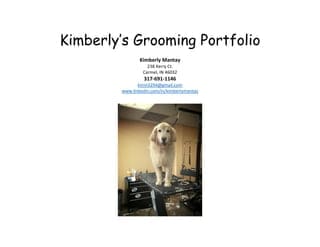

For example, for dry skin, try an oatmeal-based shampoo. Puppies need special shampoo that won’t make them tear up, so make it more comfortable with a tearless puppy shampoo. In general, oatmeal-based shampoos are usually the best basic option.
Additionally, conditioners can be used if your dog has dry or sensitive skin, and dry or brittle hair. It also can help reduce matting.
Deshedding/Dematting
Take a comb or brush and work through the coat as you’re rinsing to rid your dog of excess loose hair and to detangle any mats that they’ve developed. You’ll find it easier to do this during the bathing routine, rather than when you’re trying to dry them.
Grooming Equipment
One highly recommended professional dog grooming tip is not to skimp on the tools you’ll need (brushes, scissors, trimmers).
Not only will they last longer, but they will work better than their cheaper cousins. Make sure that you clean your equipment after every use and lubricate and sharpen as necessary to prolong the life of the tool.
Organize Your Equipment
Having everything in one place — shampoo, combs, brushes, scissors, trimmers, etc. — will keep the process moving along. There’s nothing like an anxious dog making its escape while you search for the right pair of scissors.
Get a Helping Hand
Many dogs will not sit still for drying and trimming, so you might need a little help.
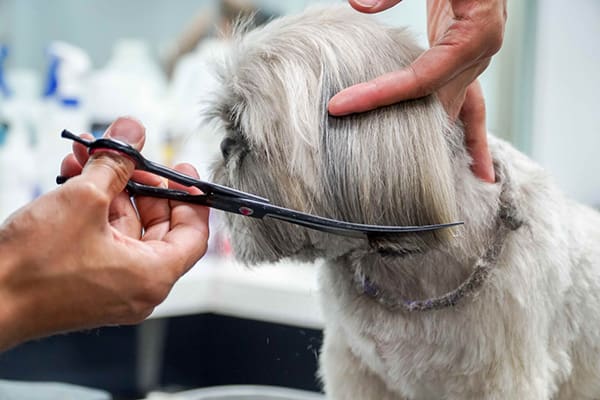

One dog-grooming trick is to use a Groomers Helper device to stabilize your dog and keep him from struggling, biting, or spinning. It will actually make your job go by all that much faster, a relief for the dog as well. If equipment isn’t in your budget, ask a family member or friend your pet is comfortable with to lend a helping hand.
Dry Before Grooming
Make sure that you thoroughly dry your dog before grooming. Partially dried coats will tend to curl more, making it difficult to get an even trim. This way you can do one pass with the clippers, rather than two.
Clippers 101
If you’ll be trimming your dog’s coat, you will need a pair of clippers and one or more blades.
Blades are numbered differently than human clipper blades, where 1 is the shortest. To keep your dog’s coat longer, use a #5/8, #3, or #4. For a shorter cut, go with #5, #7, #9, or #10.
Make sure that your blade is a finish-cut or FC version. The teeth are spaced a bit farther apart and the blades aren’t as sharp as a skip-tooth blade, which should be reserved for pro groomers. Also, for armpits, around eyes and in the sanitary area, use only a #10 blade.
Grooming Made Easy
Always go with the lay of the hair when trimming. Keep the tip of your blade down against the skin, holding the back at an angle. Then pull the skin taut as you move your trimmer along the coat (to avoid cutting the skin).
Trimming Paws
If you need to trim between the pads or around the edge of the paws, one of the simplest dog grooming tips is to move your dog to the edge of the work surface, so it makes it easier for you to get to.
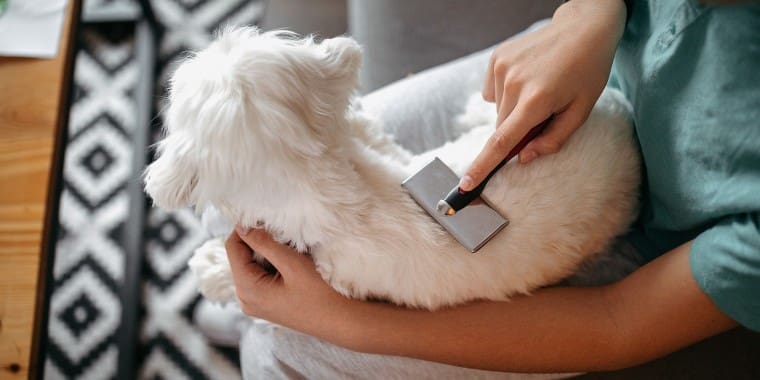

Right Tool for Trimming Nails
There are a variety of clippers available, from electric dremel-style tools to scissor and guillotine styles.
There is no need to invest in an electric dremel nail grinder. It is more expensive than the other styles and the noise can be off-putting to your dog, who probably isn’t fond of the procedure to begin with.
How to Trim the Nails
Start with the back paws, as they tend to be less sensitive. Hold the paw firmly in your hand. Cut the end off the nail, below the quick, at a 45-degree angle. You can choose to take several small cuts or one larger cut, but be very careful.
Frequently Asked Questions
What tools are essential for professional dog grooming?
Professional dog grooming requires a variety of tools to ensure that the dog is groomed properly. Some essential tools include:
-
Clippers: Clippers are used to trim the dog’s fur to the desired length. It’s important to use clippers that are designed for dogs and to choose the right blade for the dog’s coat type.
-
Scissors: Scissors are used to trim the dog’s fur in areas that are hard to reach with clippers, such as around the ears and paws.
-
Brushes and combs: Brushes and combs are used to remove tangles and mats from the dog’s fur. It’s important to choose the right brush for the dog’s coat type.

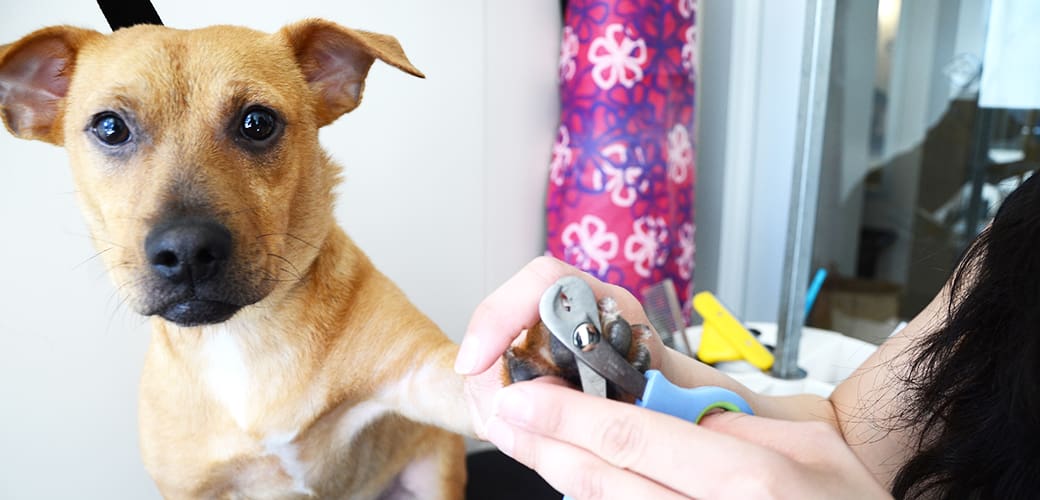
-
Nail clippers: Nail clippers are used to trim the dog’s nails. It’s important to use nail clippers that are designed for dogs and to avoid cutting the quick.
What are some effective techniques for beginners starting dog grooming at home?
For beginners starting dog grooming at home, it’s important to start slowly and to be patient with the dog.
Some effective techniques include:
-
Brushing the dog’s fur regularly to prevent tangles and mats.
-
Trimming the dog’s nails regularly to prevent them from becoming too long.
-
Bathing the dog with a gentle dog shampoo to keep the coat clean and healthy.
-
Using clippers and scissors to trim the dog’s fur to the desired length.


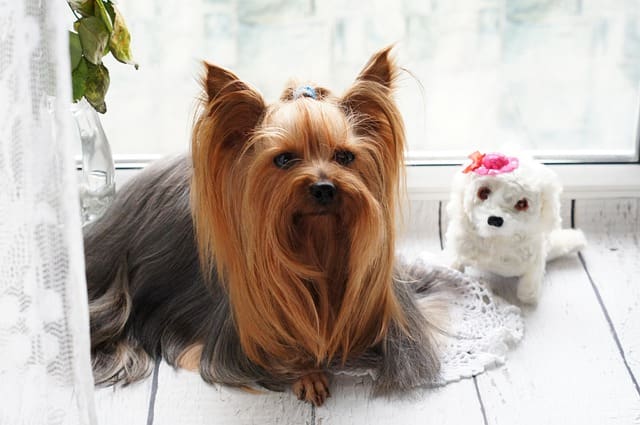
Can you describe a daily grooming routine to maintain a dog’s coat health?
To maintain a dog’s coat health, it’s important to establish a daily grooming routine. A typical daily grooming routine may include:
-
Brushing the dog’s fur to remove tangles and mats.
-
Checking the dog’s ears for dirt and debris.
-
Cleaning the dog’s teeth with a dog-specific toothbrush and toothpaste.
-
Checking the dog’s eyes for any signs of irritation or infection.
-
Wiping the dog’s paws to remove any dirt or debris.
What steps should be followed for a complete professional dog grooming session?
A complete professional dog grooming session typically includes the following steps:
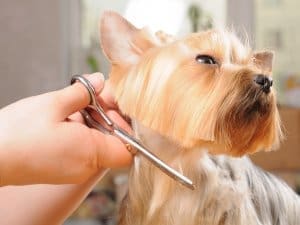

-
Brushing the dog’s fur to remove tangles and mats.
-
Bathing the dog with a gentle dog shampoo to clean the coat.
-
Drying the dog’s coat with a towel or blow dryer.
-
Trimming the dog’s nails to the desired length.
-
Using clippers and scissors to trim the dog’s fur to the desired length.



-
Cleaning the dog’s ears and teeth.
How can I groom my dog at home using clippers safely and effectively?
To groom your dog at home using clippers safely and effectively, it’s important to follow these steps:
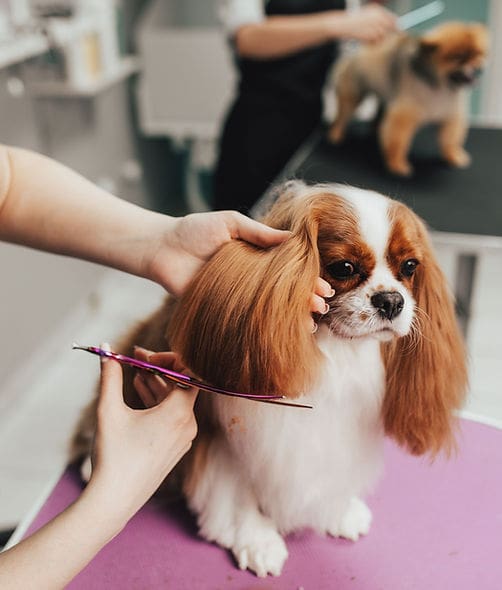

-
Choose the right clippers for your dog’s coat type.
-
Choose the right blade for the desired length of fur.
-
Start slowly and work in small sections.
-
Keep the clippers clean and well-maintained.
-
Use caution when grooming sensitive areas, such as around the ears and paws.
What is the proper etiquette for tipping a dog groomer after the service?
Tipping a dog groomer is a common practice. The amount of the tip can vary depending on the quality of the service and the location. In general, a tip of 15-20% of the service cost is appropriate.
It’s also important to consider the groomer’s level of experience and the difficulty of the job when deciding on the tip amount.
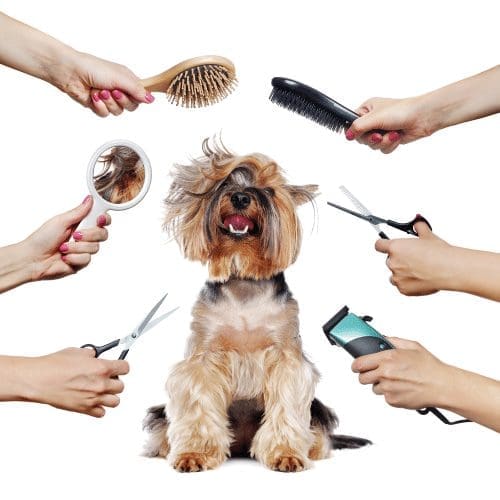





Hello, My Dog-Loving Friends! I’m Jason Brown, a social media marketer for Dog Training Schools and a writer at BestDogTraining.com. My world is all about the joy and wisdom our four-legged friends bring. I love the exchange of learning with dogs; it’s not just my job. It’s my way of life.
My journey began at Ohio State with a degree in journalism, fueling my passion for storytelling. This passion comes alive in every post and article I write, whether about the latest dog training techniques or heartwarming canine tales.
When I’m not immersed in the world of dogs, you can find me surfing. There’s a thrilling similarity between the unpredictability of the ocean and working with animals – both are endlessly fascinating. I’m also an aspiring poet, although I embrace the more humorous side of my attempts at verse.
Traveling is another passion of mine. My wife, kids, and I explore new places, always accompanied by our Basset Hound, Snoopy. He’s more than a pet; he’s integral to our family adventures.
Through my work, hobbies, and travels, I’ve discovered that life’s most fulfilling experiences come from sharing moments with family, friends, and a loyal dog. Follow me for stories and tips from a life enriched by dogs, the ocean, and family adventures! 🐕🌊👨👩👧👦
Dog Grooming
Best Training Tips for Working Dogs
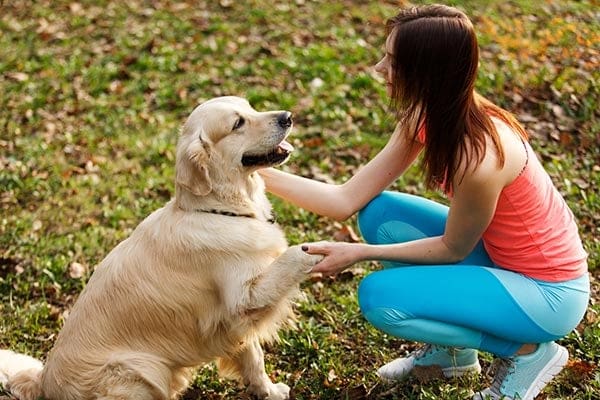

Working dogs are crucial in various fields, from law enforcement to search and rescue. But what does it take to train these hardworking canines?
In this article, we’ll explore the different types of working dogs, the importance of training, the benefits, and the basic commands every working dog should know. We’ll also discuss the best methods for training these dogs and the challenges that come with it.
Whether you’re a professional handler or simply a dog lover, this article will provide valuable insights into working dog training.
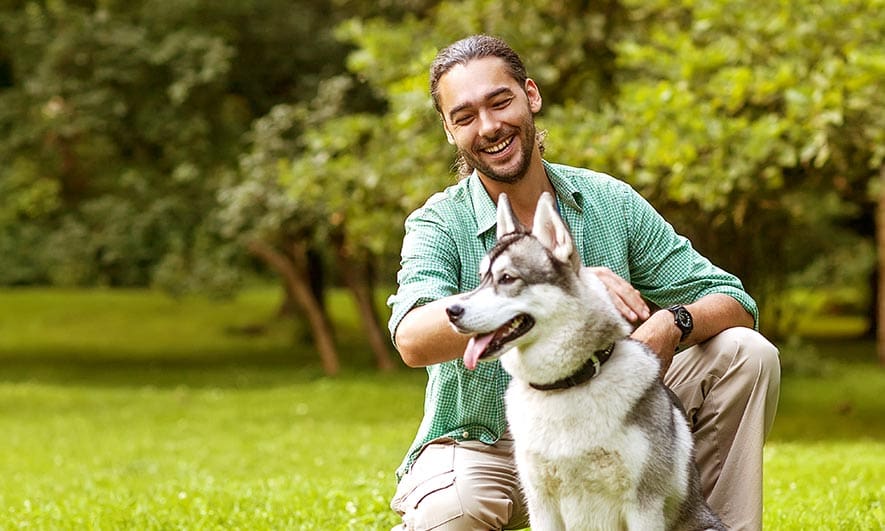

Key Takeaways:
What Are Working Dogs?
Working dogs are specially trained canines performing various tasks and duties to assist and support humans in various fields, ranging from security and protection to healthcare and research.
These skilled animals come in various breeds, each with unique traits and aptitudes tailored to specific roles. From German Shepherds excelling in police work to Labrador Retrievers aiding individuals with disabilities, the diversity in their functions is remarkable.
Training methods are key in harnessing their potential, encompassing obedience, scent detection, and agility training. Careful consideration of health and fitness is vital, ensuring that these remarkable canines are well-prepared for the demanding nature of their work. Their contributions across domains like search and rescue, therapy, and agriculture are invaluable, underscoring their significance in society.
What Are The Different Types Of Working Dogs?
Working dogs encompass a wide spectrum of specialized roles, including service, therapy, search and rescue, detection, and many others, each tailored to address specific human needs and societal challenges.
Service dogs are specially trained to assist individuals with disabilities. This includes guide dogs for the visually impaired and hearing dogs for those who are deaf or hard of hearing.
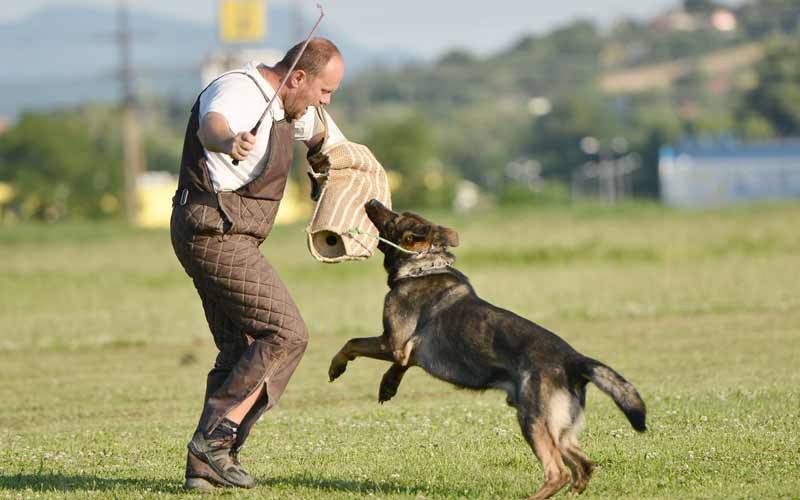

Therapy dogs provide comfort, affection, and support in various settings, such as hospitals, nursing homes, schools, and disaster areas. They offer emotional relief to people in distress.
Search and rescue dogs are trained to locate missing individuals in natural disasters or wilderness environments. They use their keen sense of smell and agility to save lives.
Why Is Training Important For Working Dogs?
Training holds immense significance for working dogs as it cultivates essential skills, behaviors, and obedience required to execute their designated tasks effectively and reliably.
Without training, working dogs could not perform tasks such as search and rescue, detection, herding, or support for individuals with disabilities.
Through carefully structured training programs, dogs can learn to respond to commands, adapt to various environments, and remain focused on their duties even in challenging situations.
What Are The Benefits Of Training For Working Dogs?
Training working dogs enhances their obedience and skills and fosters a deep, trusting relationship between the dogs and their handlers, leading to heightened efficiency and effectiveness in their designated tasks.
By actively engaging in training exercises, dogs learn to respond to commands promptly, ensuring that they perform their duties with precision and reliability.
Training allows these diligent animals to develop specialized skills, such as scent detection, search and rescue techniques, and herding capabilities, enabling them to fulfill their roles with utmost proficiency.
As the bond between a dog and its handler strengthens through consistent training, the level of trust and understanding deepens. This mutual trust results in improved communication and teamwork and cultivates a sense of loyalty and dedication in the dogs, making them even more alert, focused, and responsive to their handlers’ instructions and cues.
What Are The Basic Commands For Working Dogs?
Working dogs are trained to respond to fundamental commands, including ‘sit,’ ‘stay,’ ‘come,’ ‘heel,’ ‘leave it,’ and ‘down,’ each serving as crucial building blocks in their training and operational effectiveness.
These commands are essential for establishing control over the dogs and ensuring they can perform their duties effectively.
Obedience is a key aspect of their training, as it allows handlers to manage potential risks and guarantee reliable behavior in various situations.
Reinforcement of these commands through consistent training and positive rewards is vital for their continued responsiveness in their roles, whether it’s for search and rescue, police work, or aiding individuals with disabilities.
Sit
The sit command forms a foundational element in training working dogs, teaching them to assume a seated position on cue, showcasing their responsiveness and discipline.
This command is essential for obedience and safety, whether the dog is navigating busy city streets, participating in dog sports, or simply interacting with friends and family.
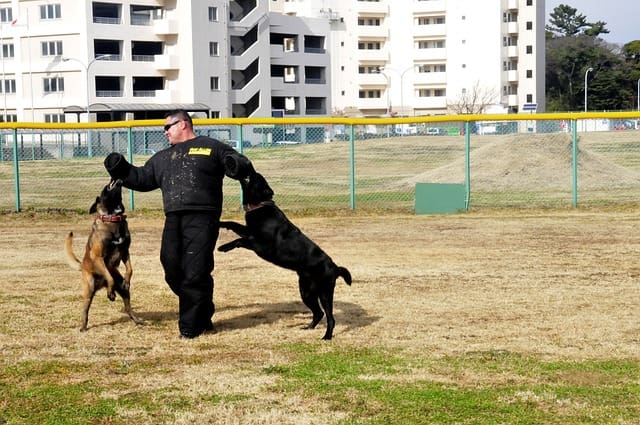

To execute the command, the trainer typically uses a treat or a toy to lure the dog into sitting, repeating the word ‘sit’ as the cue.
Once the dog complies, positive reinforcement, such as verbal praise or additional treats, is crucial to strengthen their understanding and compliance with the command.
Consistency and patience are key in reinforcing the ‘sit’ command, ensuring the dog learns to respond reliably in various environments and situations.
Stay
The stay command is pivotal in training working dogs, requiring them to maintain their position without movement until released, showcasing their discipline and attentiveness to their handler’s instructions.
It demonstrates the discipline and obedience essential for working dogs to perform their tasks effectively.
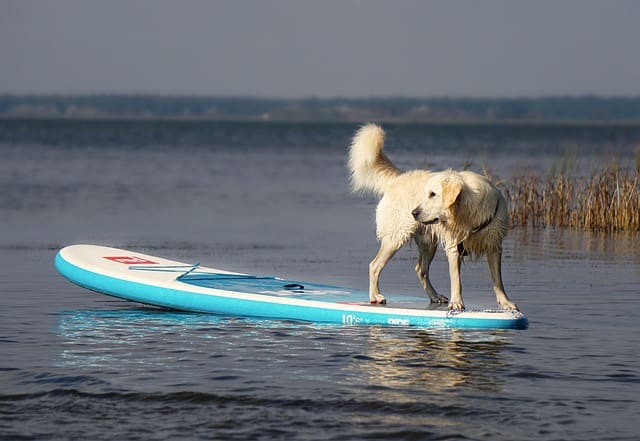

The ‘stay’ command ensures that the dog remains in place and teaches them self-control and patience. It is a skill that is particularly valuable in various working environments, such as search and rescue, police, and therapy dogs.
Positive reinforcement techniques are commonly utilized to train a dog in the ‘stay’ command. Handlers use treats, praise, and consistent practice to reinforce the desired behavior.
Gradually increasing the duration and distance of the ‘stay’ and introducing distractions help the dog to master this command. Making the training sessions fun and rewarding for the dog is essential, as well as building a positive association with the ‘stay’ command.
Come
The ‘come’ command is essential to working dog training, teaching them to respond promptly and return to their handler upon hearing the cue, highlighting their responsiveness and reliable obedience.
Training the ‘come’ command involves establishing a strong recall by using positive reinforcement and consistent practice sessions.
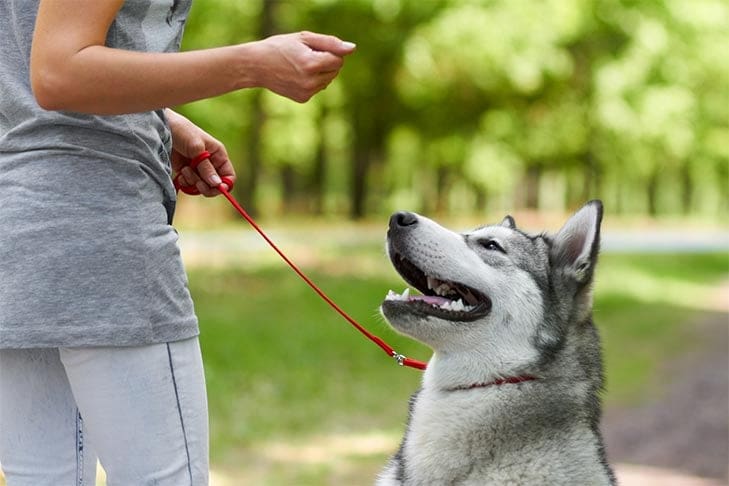

Handlers often start by using a long lead to gently guide the dog back as they say ‘come’, gradually reducing the distance and eventually transitioning to off-leash practice.
Creating a positive association with the command through rewards and praise is crucial, reinforcing the desired behavior.
Consistency and patience are key when implementing the ‘come’ command, which requires the dog’s full attention and understanding.
Incorporating real-life scenarios and distractions during training sessions helps solidify the recall response, ensuring the dog reliably comes when called.
Heel
The heel command is integral in the training of working dogs, requiring them to walk closely alongside their handler without pulling or straying, exhibiting their discipline and attentiveness during movement.
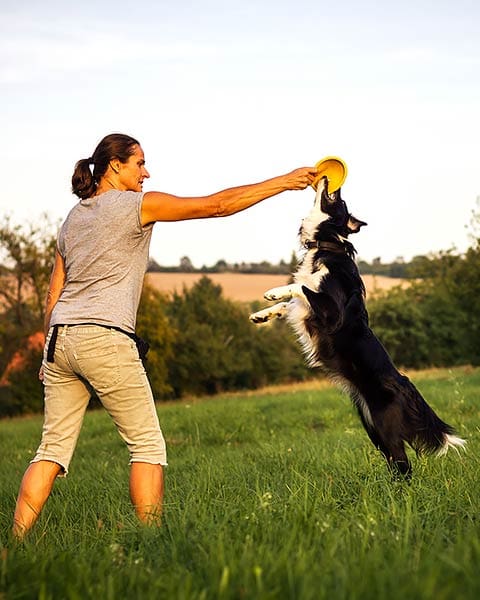

When a working dog masters the ‘heel’ command, it can effectively perform various tasks such as search and rescue, herding, protection, and assistance.
By teaching a dog to ‘heel’, the handler can maintain control in varied environments, ensuring safety and preventing the dog from getting distracted or wandering off in potentially hazardous situations. Reinforcement techniques, such as positive rewards and consistent training, are crucial in imprinting the ‘heel’ command in a working dog’s behavior, fostering a strong bond between the handler and the canine companion.
Leave It
The ‘leave it’ command is crucial for working dogs, instructing them to refrain from engaging with or consuming specific items or substances, showcasing their self-control and obedience to their handler’s directives.
During training, mastering the ‘leave it’ command involves a combination of discipline and positive reinforcement. Handlers use reward-based techniques, such as treats or verbal praise, to reinforce the desired behavior.
This command is particularly significant when working dogs encounter hazardous or distracting items, such as service dogs in public spaces. It fosters the important trait of self-control in these dogs, enabling them to focus on their duties without succumbing to temptations.
Down
The ‘down’ command is fundamental in training working dogs, requiring them to assume a lying down position, showcasing their responsiveness and ability to follow their handler’s cues.
When training a working dog to ‘down’, it’s essential to ensure consistent execution to reinforce their understanding of the command. This can involve verbal and physical cues to communicate the desired action.
Positive reinforcement, such as treats or verbal praise, is commonly used to encourage and reward the correct response. Through consistent practice and reinforcement, working dogs become adept at responding to the ‘down’ command in various environments and situations.
Incorporating this training into practical applications, such as search and rescue operations or police work, highlights the vital role of the ‘down’ command in maximizing a working dog’s capabilities.
How To Train Working Dogs?
Training working dogs requires a systematic approach that starts early, utilizes positive reinforcement, maintains consistency, and employs appropriate training methods tailored to their needs and roles.
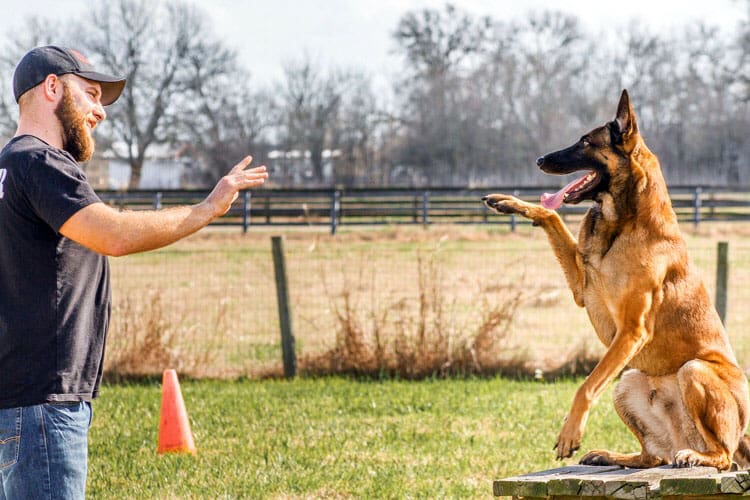

Early initiation is essential for working dogs as it sets the foundation for their roles and responsibilities. Positive reinforcement, such as treats, toys, and praise, helps to reinforce desired behaviors and strengthen the bond between the dog and the handler.
Consistency is key in establishing clear expectations and preventing confusion. Specialized training methods, like scent detection for search and rescue dogs or agility training for police K9 units, enable the dogs to develop the specific skills necessary for their tasks.
Start Training Early
Training at an early stage is pivotal for working dogs, as it establishes a strong foundation for learning, behavior shaping, and skill development, ensuring their readiness for their designated tasks.
Early training for working dogs is crucial for inculcating essential behaviors and honing the required skills. By training early, dogs can grasp commands, socialize, and develop critical problem-solving abilities more effectively. This early initiation also fosters a deeper connection between the handler and the dog, leading to better communication and understanding.
Working on mental stimulation and physical conditioning during early training can significantly impact the dog’s performance in their designated tasks. It sets the stage for a fulfilling and successful career in various working roles in service, protection, or search and rescue.
Use Positive Reinforcement
Employing positive reinforcement techniques in training working dogs fosters a conducive learning environment where desired behaviors are rewarded, shaping their responses and ensuring their sustained motivation and engagement.
This approach creates a positive association between the behavior and the reward, strengthening the likelihood of its repetition.
It also cultivates a strong bond between the trainer and the dog, fostering mutual trust and cooperation.
When working dogs experience the benefits of positive reinforcement, they demonstrate enhanced focus and willingness to carry out tasks, leading to improved performance and overall effectiveness in their designated roles.
Be Consistent
Consistency in training practices is paramount for working dogs, as it reinforces learned behaviors, establishes clear expectations, and ensures a harmonized approach across different training sessions and environments.
Consistency provides structure for the dogs and strengthens their understanding of commands and desired behavior.
The dogs learn to associate specific cues with expected responses by consistently reinforcing desired actions and behaviors. This approach helps to set clear expectations and boundaries, fostering a positive learning environment.
Use Appropriate Training Methods
Tailoring training methods to align with working dogs’ specific needs and roles is essential for maximizing their learning potential, behavioral development, and operational readiness in their designated tasks.
Understanding each working dog’s unique abilities and characteristics is crucial in customizing their training approach. By recognizing their strengths and weaknesses, trainers can adapt their methods to address individual behavioral patterns and learning styles.
This personalized approach greatly enhances the dog’s ability to grasp and execute complex tasks precisely and efficiently. Tailored training methods also contribute to working dogs’ well-being and mental stimulation, fostering a positive and rewarding training experience. This individualized attention ensures that the dogs are not only prepared for their specific roles, but also nurtured in a way that supports their overall development and happiness.
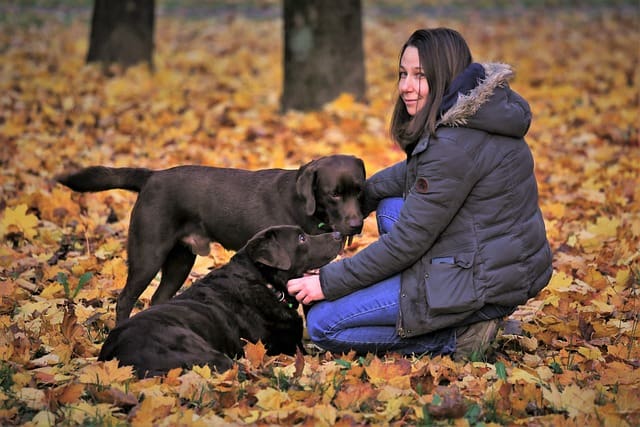

What Are The Challenges Of Training Working Dogs?
Training working dogs presents various challenges, including managing their high energy levels, mitigating distractions, addressing breed-specific needs, and accommodating potential physical limitations to ensure effective training outcomes.
Breeds such as Border Collies and Australian Shepherds are known for their high energy levels, making it essential to provide ample physical and mental stimulation.
Proper management of distractions during training sessions, like using controlled environments and gradual exposure, is crucial for fostering focus. Understanding breed-specific traits and behaviors, such as the strong herding instincts in certain breeds, allows trainers to tailor their approaches effectively.
High Energy Levels
Managing the high energy levels of working dogs during training poses a significant challenge, requiring strategies to channel their energy positively and maintain their focus and responsiveness.
When working with high-energy dogs, redirecting their energy toward tasks that require focus and concentration can be highly beneficial. Incorporating activities such as agility courses, obedience training, and interactive play can help them burn off excess energy constructively.
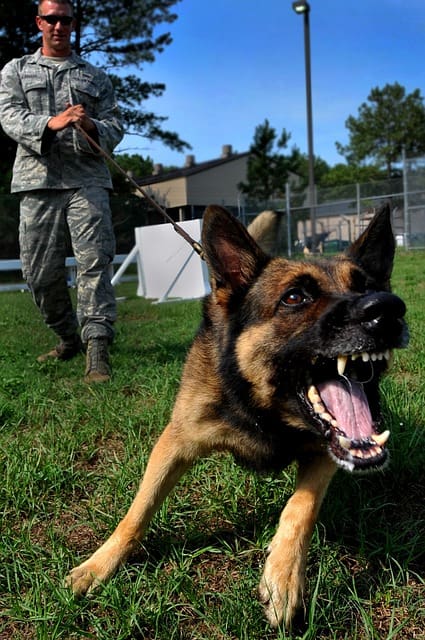

Using stimulating toys and challenging exercises during training sessions can help maintain their focus and prevent boredom.
Distractions
Mitigating distractions during training is a critical challenge for working dogs, necessitating techniques to enhance their focus, minimize external disruptions, and reinforce their concentration on assigned tasks.
Distractions like noises, smells, and unfamiliar surroundings can detract working dogs from their training objectives. To address this, trainers utilize focus enhancement strategies, including desensitization to environmental stimuli, systematic exposure to distractions, and positive reinforcement for maintaining attention.
Moreover, disruption minimization involves creating controlled training environments, using consistent routines, and gradually introducing new elements to avoid overwhelming the dogs. Concentration reinforcement methods, like mental stimulation exercises and establishing clear communication cues, further promote sustained attention during tasks.
Different Breeds Have Different Needs
Addressing the diverse needs of different dog breeds presents a notable challenge in training, requiring customized approaches to accommodate their distinct characteristics, behaviors, and learning styles.
Each breed possesses unique traits and tendencies, necessitating tailored training methods.
For example, highly energetic breeds such as Border Collies may require more physical activity and mental stimulation, while independent breeds like Siberian Huskies may need gentle persistence and patience.
Sensitive breeds such as Shih Tzus might respond better to positive reinforcement, whereas working breeds like German Shepherds thrive in tasks and obedience training.
Being adaptable in the training approach is crucial to address the individual needs of various breeds effectively.
Physical Limitations
Accommodating the potential physical limitations of working dogs during training poses a significant challenge, necessitating specialized techniques and adaptations to ensure their comfort, safety, and training efficacy.
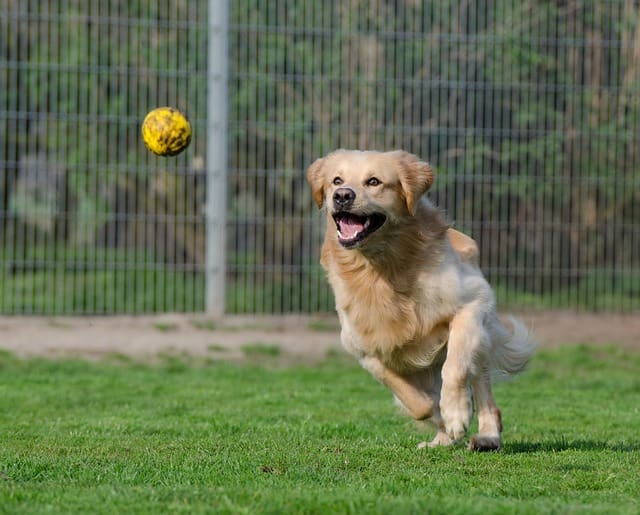

Understanding individual dogs’ unique needs and abilities is crucial in addressing their physical limitations. Tailoring training regimens to account for disabilities or physical constraints requires a thoughtful approach, often involving customized equipment and training aids.
Training environments must be carefully designed to minimize potential risks and consider the impact of the dog’s limitations on their performance. It’s also essential to continuously monitor and adjust training techniques to account for any changes in the dog’s physical condition over time.
Frequently Asked Questions
What is training for working dogs?
Training for working dogs is a specialized program designed to teach dogs specific tasks and skills that will enable them to perform duties in various fields, such as search and rescue, detection, and protection.
What are the benefits of training for working dogs?
Training for working dogs can provide a wide range of benefits, including improved obedience, increased physical and mental stimulation, and the development of specialized skills that can benefit both the dog and their human partners in various working environments.
What types of dogs are suitable for training for working dogs?
Many breeds and mixes can excel in training for working dogs, but some of the most commonly trained include German Shepherds, Labrador Retrievers, Belgian Malinois, and Golden Retrievers. Breeds with a strong desire to work and high levels of energy are typically the best candidates.
How long does training for working dogs typically take?
Training for working dogs can vary in length depending on the specific skills and tasks being taught. Basic obedience training can take a few weeks, while more advanced training for specific tasks and situations can take several months or even up to a year.
What does the training process for working dogs involve?
The training process for working dogs typically involves a combination of positive reinforcement, repetition, and gradual advancement in difficulty. Dogs are taught to focus on their handler, follow commands, and perform tasks with consistency and reliability.
Can any dog become a working dog through training?
While many dogs can benefit from training and excel in various tasks, not all dogs have the temperament, physical ability, or drive to become working dogs. It’s important to carefully assess a dog’s personality and capabilities before committing to training for working dogs.




Hello, My Dog-Loving Friends! I’m Jason Brown, a social media marketer for Dog Training Schools and a writer at BestDogTraining.com. My world is all about the joy and wisdom our four-legged friends bring. I love the exchange of learning with dogs; it’s not just my job. It’s my way of life.
My journey began at Ohio State with a degree in journalism, fueling my passion for storytelling. This passion comes alive in every post and article I write, whether about the latest dog training techniques or heartwarming canine tales.
When I’m not immersed in the world of dogs, you can find me surfing. There’s a thrilling similarity between the unpredictability of the ocean and working with animals – both are endlessly fascinating. I’m also an aspiring poet, although I embrace the more humorous side of my attempts at verse.
Traveling is another passion of mine. My wife, kids, and I explore new places, always accompanied by our Basset Hound, Snoopy. He’s more than a pet; he’s integral to our family adventures.
Through my work, hobbies, and travels, I’ve discovered that life’s most fulfilling experiences come from sharing moments with family, friends, and a loyal dog. Follow me for stories and tips from a life enriched by dogs, the ocean, and family adventures! 🐕🌊👨👩👧👦
Dog Grooming
What Sets a Dog Grooming Apron With Pockets Apart?
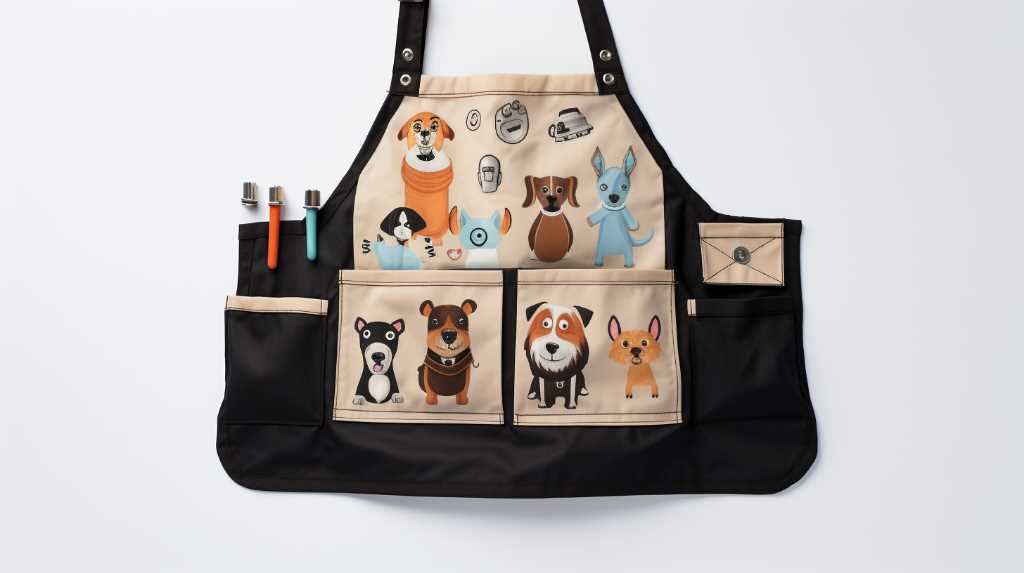

For dog groomers seeking a sense of freedom and practicality in their work, the choice of grooming apron holds significant importance. What sets a dog grooming apron with pockets apart lies in its ability to provide convenience and efficiency.
The inclusion of pockets offers the freedom to keep essential tools, treats, and accessories within reach, eliminating the need for constant back-and-forth movements. Furthermore, the durability and material of the apron are critical factors that ensure longevity and ease of maintenance.
Comfort and functionality are also paramount, allowing groomers to move freely and attend to their furry clients without hindrance. Professional groomers understand the value of a well-designed apron, making it an indispensable tool for their daily grooming routines.
Importance of Pockets in Grooming Aprons
The importance of pockets in grooming aprons lies in their ability to conveniently hold essential tools and supplies for efficient grooming procedures. Pockets organization is crucial for groomers who require quick access to items such as brushes, combs, scissors, and nail clippers.
Without proper apron storage solutions, groomers may find themselves fumbling for tools or having to carry them separately, leading to a less streamlined and more time-consuming grooming process. A well-designed grooming apron with strategically placed pockets ensures that everything a groomer needs is within easy reach, allowing for a smoother workflow and a more enjoyable grooming experience.
This level of organization and accessibility is essential for professionals who value freedom of movement and efficiency in their work.
Material and Durability: A Groomer’s Ally
A high-quality dog grooming apron with pockets is crafted from durable and water-resistant material, providing groomers with a reliable ally that withstands the rigors of daily use. The material selection is crucial in ensuring the longevity and functionality of the apron, making maintenance easier and more effective.
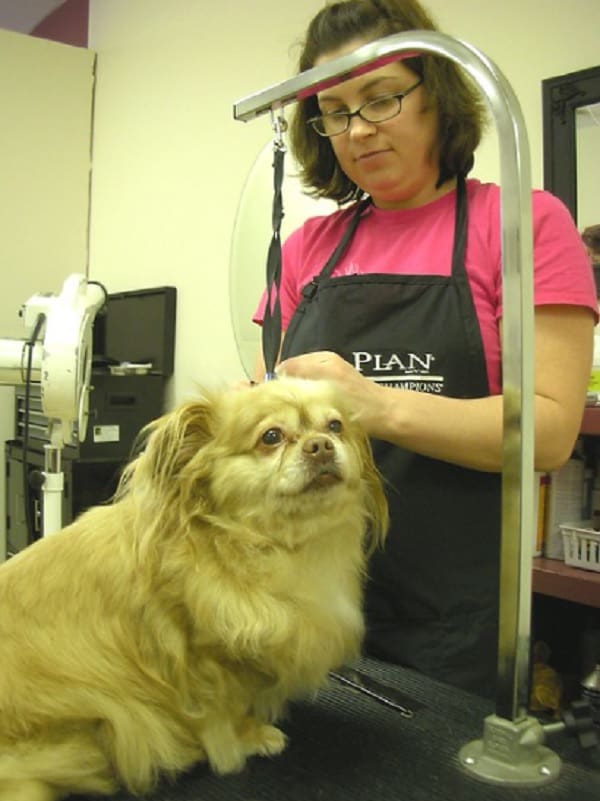

The following factors set such aprons apart:
- Water-Resistant Material: The apron’s ability to repel water ensures that grooming fluids and water don’t seep through, keeping the groomer dry and comfortable.
- Durable Construction: The use of tough, resilient materials ensures that the apron can withstand the demands of a busy grooming environment without tearing or wearing out quickly.
- Easy Maintenance: The selected material is easy to clean, allowing for quick and efficient apron maintenance, saving time and effort for the groomer.
Design and Comfort: Prioritizing the Groomer’s Need
Crafting a dog grooming apron with pockets that prioritize the groomer’s need for design and comfort requires attention to detail and a deep understanding of the demands of the grooming environment.
Design innovation plays a pivotal role in creating aprons that offer both style and functionality. The incorporation of ergonomic fit is essential in ensuring that groomers can move freely and comfortably during long hours of work.
The strategic placement of pockets and compartments should not only enhance the apron’s aesthetic appeal but also provide practicality, ensuring that essential tools are within easy reach. A well-designed apron should distribute weight evenly to prevent strain and fatigue.
The choice of materials and the breathability of the fabric are also crucial factors in enhancing overall comfort. Ultimately, a thoughtfully designed grooming apron can significantly elevate a groomer’s experience, allowing for greater freedom of movement and convenience.
Professional Groomers’ Insights on Apron Utility
Professional groomers emphasize the practicality and functionality of apron pockets in their daily grooming routines. From a groomer’s perspective, apron organization plays a crucial role in enhancing efficiency and productivity. Here are insights from professional groomers on apron utility:
- Tool Accessibility: Groomers rely on apron pockets to keep essential tools such as scissors, brushes, and combs within easy reach, allowing for seamless grooming without interruptions.
- Treat Storage: Apron pockets provide a convenient space for storing treats, enabling groomers to reward good behavior during grooming sessions without having to step away to retrieve treats.
- Mobile Phone Holder: Many groomers appreciate aprons with pockets designed to securely hold their mobile phones, ensuring they can stay connected and accessible while working hands-free.
These insights underscore the significance of well-organized apron pockets in the grooming profession.
Style Meets Function: Choosing Your Apron
When choosing a dog grooming apron with pockets, it is essential to consider both style and functionality to ensure a professional and efficient grooming experience.
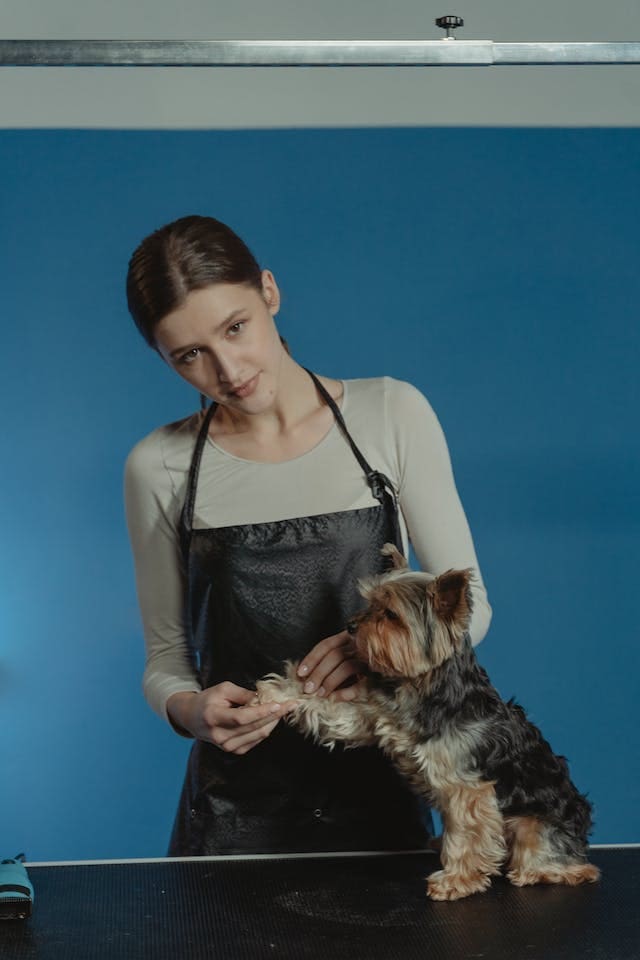

The style of the apron should not only reflect your personal taste but also exude professionalism. Opt for aprons that come in various colors and designs, allowing you to express your individuality while maintaining a polished look.
Practicality and comfort are equally important. Look for aprons made from durable, waterproof materials that are easy to clean, ensuring they can withstand the demands of the grooming environment. Additionally, adjustable neck and waist straps provide a comfortable fit for extended wear.
Frequently Asked Questions
Can a Grooming Apron With Pockets Help Prevent Hair and Debris From Getting on My Clothes?
A grooming apron with pockets provides effective prevention of hair and debris from soiling clothes. It offers storage solutions for tools and accessories, aiding in organization and efficiency during grooming sessions.
Are There Specific Types of Tools or Products That Can Be Easily Stored in the Pockets of a Grooming Apron?
Storage solutions in a grooming apron enable easy access to essential grooming tools and products. These pockets provide apron organization, ensuring quick retrieval of items while maintaining cleanliness. Additionally, they offer added hair protection, keeping debris away from clothing and promoting a cleaner grooming environment.
How Do the Pockets on a Grooming Apron Help With Organization During the Grooming Process?
In the grooming process, the pockets on a grooming apron enhance organization efficiency by providing convenient storage for essential tools. The apron’s design ensures quick access to grooming tools, promoting a seamless and focused grooming experience.
Are There Any Special Features or Considerations to Keep in Mind When Choosing a Grooming Apron With Pockets?
When choosing a grooming apron with pockets, consider the durability and comfort it offers. Look for aprons made from water-resistant, easy-to-clean materials. Sizing is crucial for a good fit, ensuring ease of movement during grooming sessions.


What Are Some Creative Ways That Groomers Utilize the Pockets on Their Aprons During a Grooming Session?
Apron organization and creative tools play a crucial role in grooming efficiency. Groomers utilize apron pockets for quick access to scissors, brushes, and treats, enhancing their ability to multitask and provide smooth, uninterrupted grooming sessions for pets.




Hello, My Dog-Loving Friends! I’m Jason Brown, a social media marketer for Dog Training Schools and a writer at BestDogTraining.com. My world is all about the joy and wisdom our four-legged friends bring. I love the exchange of learning with dogs; it’s not just my job. It’s my way of life.
My journey began at Ohio State with a degree in journalism, fueling my passion for storytelling. This passion comes alive in every post and article I write, whether about the latest dog training techniques or heartwarming canine tales.
When I’m not immersed in the world of dogs, you can find me surfing. There’s a thrilling similarity between the unpredictability of the ocean and working with animals – both are endlessly fascinating. I’m also an aspiring poet, although I embrace the more humorous side of my attempts at verse.
Traveling is another passion of mine. My wife, kids, and I explore new places, always accompanied by our Basset Hound, Snoopy. He’s more than a pet; he’s integral to our family adventures.
Through my work, hobbies, and travels, I’ve discovered that life’s most fulfilling experiences come from sharing moments with family, friends, and a loyal dog. Follow me for stories and tips from a life enriched by dogs, the ocean, and family adventures! 🐕🌊👨👩👧👦
-



 Dog Grooming1 year ago
Dog Grooming1 year ago7 Essential Tips for Dog Grooming: From Coat Length to Cooling Down Period
-



 Dog Breeds1 year ago
Dog Breeds1 year agoIs There a Real Connection Between Dog Breeds and Their Inherent Aggressiveness?
-

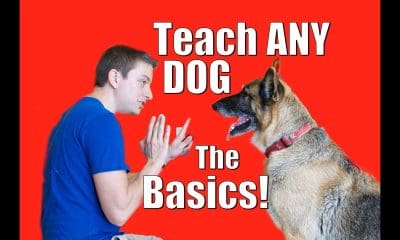

 Videos1 year ago
Videos1 year agoDog Training 101: How to Train ANY DOG the Basics
-



 Dog Adoption1 year ago
Dog Adoption1 year agoWhy Should You Consider Bringing Home a Senior Dog?
-



 Dog Adoption1 year ago
Dog Adoption1 year agoWhat Are the Considerations Before Adopting a Special Needs Dog?
-

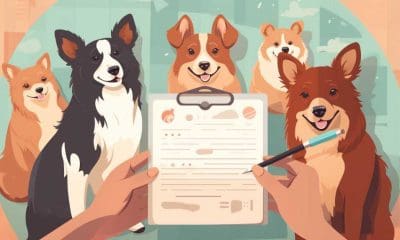

 Dog Adoption1 year ago
Dog Adoption1 year agoWhat Crucial Elements Should I Consider in a Dog Adoption Contract?
-

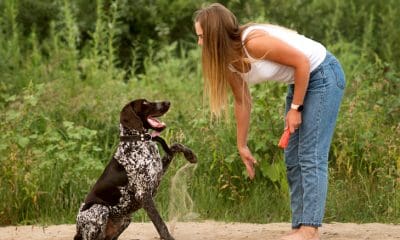

 Dog Training1 year ago
Dog Training1 year agoUnleash Your Pooch’s Potential: Mastering the Art of Fetch
-

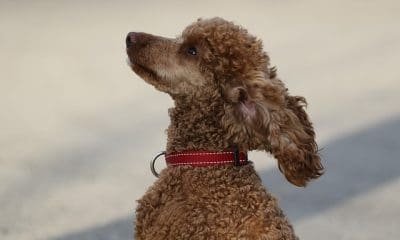

 Dog Adoption1 year ago
Dog Adoption1 year agoMaking Your Home a Haven for Your New Dog}




















